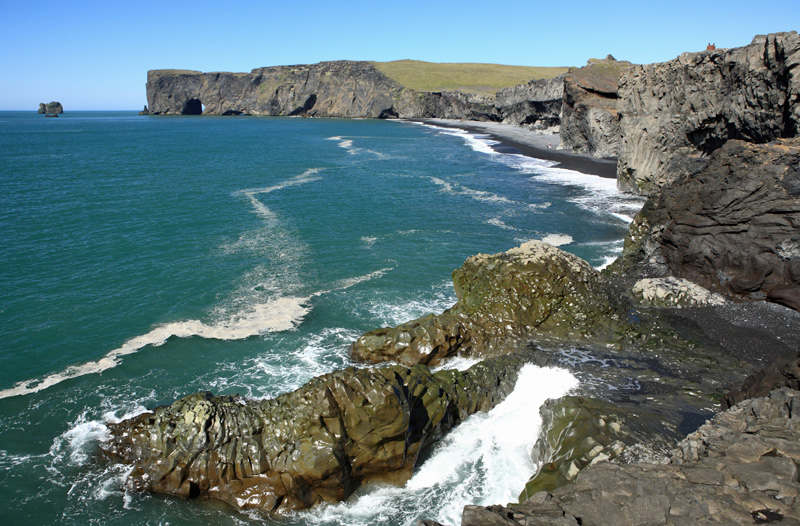- Visiting Iceland
- Travel Information
- FAQ
- Protected Areas
- Westfjords
- Breidafjordur
- Dynjandi in Arnarfjordur
- About the area
- Access and services
- Pay for parking
- Nature
- Culture and history
- Drone use at Dynjandi
overlayDynjandi in Arnarfjordur
- Flatey in Breidafjordur
- Hornstrandir
- Why is the area protected?
- Useful information
- Administration
- Hiking trails
overlayHornstrandir
- Hrisey, Reykholahreppur
- Látrabjarg
- For seafarers
overlayLátrabjarg
- Surtarbrandsgil
- Vatnsfjordur
- About the area
- Access and services
- Culture and history
- Hrafna-Flóki and Flókatóftir
- Gíslahellir
- Þingmannaheiði
overlayCulture and history
- Nature and geology
- Hiking trails
overlayVatnsfjordur
overlayWestfjords
- North West
- North East
- Boggvistadafjall
- Dettifoss and a row of waterfalls
- Dimmuborgir
- Public park in Glerardalur
- Reservation in Svarfadardalur
- Godafoss in Thingeyjarsveit
- Hraun in Oxnadalur
- Hverastrytur in Eyjafjordur
- Hverfjall
- Krossanesborgir
- Myvatn and Laxa
- Seljahjallagil
- Skutustadagigar
- Vatnajokull National Park
- Vestmannsvatn
overlayNorth East
- West
- Andakill
- Bardarlaug, Snaefellsbaer
- Blautos and Innstavogsnes
- Breidafjordur
- Budahraun
- Einkunnir, Borgarbyggd
- Eldborg in Hnappadalur
- Geitland, Borgarbyggd
- Grabrokargigar, Borgarbyggd
- Grunnafjordur
- Hraunfossar, Borgarbyggd
- Husafellsskogur, Borgarbyggd
- Kalmanshellir
- Melrakkaey
- Stedji (Staupasteinn)
- The coast by Stapi and Hellnir
- Vatnshornsskogur, Skorradalur
- Snaefellsjokull National Park
overlayWest
- Search by name
- East
- South West
- Akurey
- Alafoss, Mosfellsbaer
- Astjorn, Hafnarfjordur
- Astjorn and Asfjall, Hafnarfjordur
- Bakkatjorn, Seltjarnarnes
- Blafjoll Public Park
- Borgir, Kopavogur
- Bringur, Mosfellsdalur
- Burfell, Gardabaer
- Eldborg in Blafjoll
- Eldborg in Geitahlid
- Eldey, Reykjanesbaer
- The shore by Kasthusatjorn
- Fossvogsbakkar, Reykjavik
- Gardahraun, Gardabaer
- Galgahraun, Gardabaer
- Grotta, Seltjarnarnes
- Hamarinn, Hafnarfjordur
- Haubakkar, Reykjavik
- Hleinar, Hafnarfjordur
- Hlid, Alftanes
- Hvaleyrarlon and Hvaleyrarhofdi
- Kaldarhraun and Gjarnar
- Kasthusatjorn, Alftanes
- Laugaras, Reykjavik
- Litluborgir, Hafnarfjordur
- Raudholar, Reykjavik
- Reykjanes Public Park
- Skerjafjordur, Gardabaer
- Skerjafjordur, Kopavogur
- Stekkjarhraun, Hafnarfjordur
- Trollaborn, Lækjarbotnar
- Tungufoss, Mosfellsbaer
- Valhusahaed, Seltjarnarnes
- Varmarosar, Mosfellsbaer
- Vifilsstadavatn, Gardabaer
- Vigholar, Kopavogur
overlaySouth West
- South
- Alftaversgigar
- Arnahellir in Leitahraun
- Dverghamrar
- Dyrholaey
- Fjallabak Nature Reserve
- About the nature reserve
- Access and services
- Landmannalaugar
- Reservations
- FAQ
- About the area
overlayLandmannalaugar
- Outdoor activities and hiking trails
- Nature and geology
- Culture and history
overlayFjallabak Nature Reserve
- Geysir Area
- Gullfoss
- About the area
- Nature and geology
- Culture and history
overlayGullfoss
- Herdisarvik
- Jorundur in Lambahraun
- Kerlingarfjoll
- General information
- The protected area
- Access and services
- Outdoor activities and hiking trails
- Information
- Geology
- Mountain peaks
- Flora and Fauna
overlayInformation
overlayKerlingarfjoll
- Kirkjugolf
- Oddaflod
- Pollengi and Tunguey
- Skogafoss
- About the area
- Culture and history
- Access and management
overlaySkogafoss
- Surtsey
- Protection
- Research
- Mapping and surveilance
overlaySurtsey
- Area in Thjorsardalur
- Vatnajokull National Park
- Videy in Thjorsa
- Thingvellir National Park
- Thjorsarver
- About the nature reserve
- Nature and geology
- History and utilization
overlayThjorsarver
overlaySouth
- Mývatn and Laxá
- About Mývatn
- Visitor center
- Flora and Fauna
- Archeology and Folklore
- Geology
overlayMývatn and Laxá
- National Parks
overlayProtected Areas
- Westfjords
- Permits in protected areas
- Operational licence
- Photography, cinematography and drone flying
- Research permit
overlayPermits in protected areas
- Drones in protected areas
- Guidelines for using drones in protected areas
- Flights in protected areas
- Apply for permit
overlayDrones in protected areas
- Volunteers
- Snæfellsjökull National Park
overlayVisiting Iceland
- Wildlife
- Air & Climate
- Air pollution during a volcanic eruption
- EU ETS
overlayAir & Climate
- Ocean & Water
- Industry
- Chemicals
- Frequently asked questions
- Biocides
- Classification and labelling – CLP
- Cosmetics
- Detergents
- Fluorinated greenhouse gases (F-gases)
- Fuel
- Certificate for pest control
- Certificate for professional use of plant protection products
- Plant protection products
- POPs
- REACH
- Safety data sheets
- Supervision, inspection and coercive measures
overlayFrequently asked questions
- Biocides
- Biocidal products
- Fees
- FAQ
- National transitional requirements
overlayBiocides
- Classification and labelling
- CLP
- Classification
- Labelling
- Packaging and retention
overlayClassification and labelling
- Cosmetics
- Detergents
- F-gases
- Fuel
- Plant protection products
- Authorisation
- Harmonised Risk Indicators
overlayPlant protection products
- POPs
- REACH
- Fees
overlayChemicals
- Frequently asked questions
- Importation of Alien Species
- ETS
overlayIndustry
- Chemicals
- Circular Economy
- Waste
- Waste Management
overlayCircular Economy
- The Agency
- About the EAI
- Departments
- Responsibilities
- Nature
- Wildlife
- Air & Climate
- Chemicals
- Ocean & Water
- Industry
- Circular Economy
overlayResponsibilities
- Values and policy
- Act on the EAI
- Contact us
overlayThe Agency
overlay
- Visiting Iceland
- Wildlife
- Air & ClimateAir & Climate
- Ocean & Water
- Industry
- Circular EconomyCircular Economy
- The Agency
Vinna við nýjar heimasíður Umhverfis- og orkustofnunar og Náttúruverndarstofnunar er í gangi. Heimasíða Umhverfisstofnunar er virk á meðan vinnunni stendur. Information in English
Dyrholaey

Dyrhólaey is a 120 m high tuya that was formed in at least two eruptions around 100,000 years ago.
Dyrhólaey was protected in 1978 by the Icelandic government for its great natural beauty, its birdlife and to maintain this popular tourist destination. The reserve covers an area of 147.2 ha. A ranger resides in the area year-round and handles the infrastructure, nature preservation and visitor education.